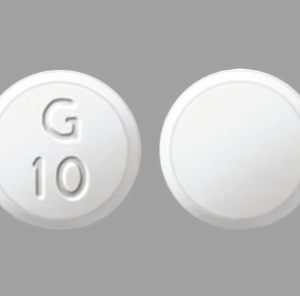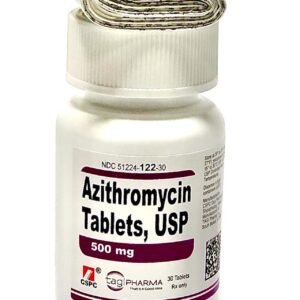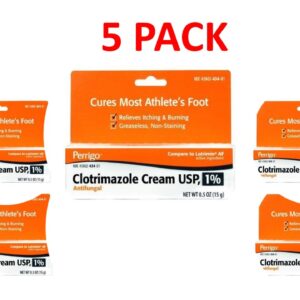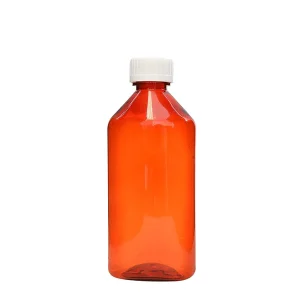Delivery Method: VIA ELECTRONIC MAIL READ/DELIVERY RECEIPT REQUESTED Reference #: 320-26-02 Product: Drugs Recipient:
Recipient Name
Ms. Denise Kwiatkowski
Recipient Title
Regulatory Affairs Manager
Scientific Protein Laboratories, LLC
700 East Main Street
Waunakee, WI 53597
United States
Issuing Office: Center for Drug Evaluation and Research (CDER)
United States
Warning Letter 320-26-02
October 10, 2025
Dear Ms. Kwiatkowski:
The United States Food and Drug Administration (FDA) inspected your drug manufacturing facility, Scientific Protein Laboratories, LLC, FEI 2111173, at 700 East Main Street, Waunakee, from April 21 to May 2, 2025.
This warning letter summarizes significant deviations from Current Good Manufacturing Practice (CGMP) for active pharmaceutical ingredients (APIs).
Because your methods, facilities, or controls for manufacturing, processing, packing, or holding do not conform to CGMP, your APIs are adulterated within the meaning of section 501(a)(2)(B) of the Federal Food, Drug, and Cosmetic Act (FD&C Act), 21 U.S.C. 351(a)(2)(B).
We reviewed your May 23, 2025 response to our Form FDA 483 in detail and acknowledge receipt of your subsequent correspondence.
During our inspection, our investigators observed specific deviations, including but not limited to the following:
1. Failure to ensure that equipment surfaces in contact with raw materials, intermediates and API do not alter the quality of the intermediates and API beyond the official or other established specifications.
You manufacture multiple animal-derived APIs. During the inspection, our investigators observed numerous grooves and scratches on the API contact surface of a (b)(4) table, where you perform (b)(4) and initial processing of organs such as pancreases, used in the manufacture of pancrelipase. These grooves and scratches indicate that your process generates (b)(4) and may lead to contamination of your API with particulate matter (e.g., (b)(4) or particles).
In your response, you state that you serviced the affected (b)(4) table to remove scratches, conducted an inspection of all (b)(4) tables in use to identify any additional units with similar wear or damage, and decommissioned and replaced these units. You indicated that you control for (b)(4) particles using (b)(4) that can detect (b)(4) from (b)(4) to (b)(4).
Your response is inadequate because it does not provide a preventive maintenance plan to ensure that your resurfaced (b)(4) table is suitable for manufacturing. Additionally, your response lacks an evaluation of whether the (b)(4) table is made of a material that is adequate to minimize the introduction of foreign metal particles into your APIs. Furthermore, you did not provide details about your process for (b)(4) particle removal. FDA is concerned that (b)(4) from (b)(4) to (b)(4) in size may pose a risk to patients. You failed to conduct a risk assessment of APIs within expiry that may have been contaminated with (b)(4).
In response to this letter, provide:
- A retrospective, independent review of all batches within expiry that could have been affected by (b)(4) introduced as a result of your manufacturing process, including an evaluation of retain samples for (b)(4) and a review of consumer complaints for the last three years.
- An evaluation of your process and equipment to determine whether changes can be implemented to remove the risk of foreign material introduced to APIs because of process design and materials.
- A validation report of your (b)(4) and a study conducted to justify the presence of extraneous (b)(4) up to (b)(4) in your APIs. Your corrective action and preventive action (CAPA) plan should focus on significantly reducing the maximum size of foreign particles generated by your manufacturing process.
- Your CAPA plan to implement routine, vigilant operations management oversight of facilities and equipment. This plan should ensure, among other things, prompt detection of equipment/facilities performance issues, effective execution of repairs, adherence to appropriate preventive maintenance schedules, timely technological upgrades to the equipment/facility infrastructure, and improved systems for ongoing management review. Your plan should also ensure that appropriate actions are taken throughout the company network.
2. Failure to establish and follow written procedures for investigating critical deviations or the failure of intermediates and API lots to meet specifications.
You failed to conduct adequate investigations into out-of-specification (OOS) results. For example:
- Your investigation into (b)(4) assay failures during stability testing of (b)(4) thyroid-powder lots identified your sampling procedure as the potential root cause. You revised the procedure to require (b)(4) samples from (b)(4) locations within the API drum. You performed assay testing on new samples using this revised procedure and obtained passing results. Your investigation did not include sufficient evidence or rationale to support your purported root cause. FDA is concerned with your practice of (b)(4) sampling, which has the capability to mask individually failing testing results. Additionally, this drug is a narrow therapeutic index, where content uniformity is critical.
- You investigated lipase assay failure during stability testing of (b)(4) distributed pancreatin lots, but you failed to expand your investigation to other pancreatin lots. You also failed to notify your customers about these failing stability results, according to your procedure.
- Your 2023 investigation into a failure of residual (b)(4) limit, a release specification in pancreatic enzyme concentrate, identified (b)(4) in the (b)(4) as a potential root cause, affecting (b)(4) and subsequent (b)(4) specification failure. You implemented CAPA, but subsequently you had an additional residual (b)(4) limit failure in 2024. While you did not release these batches, your investigation lacked an adequate root cause analysis to assess all sources of variability in your manufacturing process that could be contributing to the failures.
- FDA documented multiple batch rejections based on positive (b)(4) test results for (b)(4). We acknowledge that you rejected these batches and recognize (b)(4) is a known risk factor in animal-derived APIs. The manufacturing processes for both thyroid and pancrelipase products are inherently high-risk because traditional viral clearance methods are generally not feasible, thus requiring a control strategy of discarding any (b)(4)-positive material. Critical gaps in the investigation of positive (b)(4) results in the affected pancrelipase products included inadequate evaluation of cleaning procedures between contaminated batches, failure to extend the investigation beyond positive batches to all source material, and failure to assess whether thyroid lots and infected pancreas material were sourced from the same supplier.
In your response, you state that you revised your investigation procedure to ensure consistent and robust root-cause determination, to establish scope requirements to assess potential impact on other lots and manufacturing processes, to require CAPA determination for all critical and major investigations, and to establish explicit instructions to inform clients to place APIs on hold until the completion of the investigation.
Your response is inadequate because it does not demonstrate that you adequately identify root cause, implement effective remediations, and expand the investigation to evaluate the effect(s) on other batches or APIs. Additionally, your response fails to provide adequate details about your CAPAs and fails to provide supporting documentation for your CAPAs.
Inadequate investigations can lead to unidentified root causes, ineffective CAPAs, and recurring problems that compromise the ability to manufacture safe and effective APIs.
In response to this letter, provide a comprehensive, independent assessment of your overall system for investigating deviations, discrepancies, complaints, OOS results, and failures. Provide a detailed action plan to remediate this system. Your action plan should include but not be limited to significant improvements in investigation competencies, scope determination, root-cause evaluation, CAPA effectiveness, quality unit oversight, and written procedures. Address how your firm will ensure that all phases of investigations are appropriately conducted.
Conclusion
The deviations cited in this letter are not intended to be an all-inclusive list of deviations that exist at your facility. You are responsible for investigating and determining the causes of any deviations and for preventing their recurrence or the occurrence of other deviations.
If you are considering an action that is likely to lead to a disruption in the supply of drugs produced at your facility, FDA requests that you contact CDER’s Drug Shortages Staff immediately, at drugshortages@fda.hhs.gov, so that FDA can work with you on the most effective way to bring your operations into compliance with the law. Contacting the Drug Shortages Staff also allows you to meet any obligations you may have to report discontinuances or interruptions in your drug manufacture under 21 U.S.C. 356C(b). This also allows FDA to consider, as soon as possible, what actions, if any, may be needed to avoid shortages and protect the health of patients who depend on your products.
Correct any deviations promptly. Failure to promptly and adequately address this matter may result in regulatory or legal action without further notice, including, without limitation, seizure and injunction. Unresolved deviations may also prevent other Federal agencies from awarding contracts.
Failure to address deviations may also cause FDA to withhold issuance of Export Certificates. FDA may withhold approval of new applications or supplements listing your firm as a drug manufacturer until any deviations are completely addressed and we confirm your compliance with CGMP. We may re-inspect to verify that you have completed corrective actions to address any deviations.
This letter notifies you of our findings and provides you with an opportunity to address the above deficiencies. After you receive this letter, respond to this office in writing within 15 working days.1 Specify what you have done to address any deviations and to prevent their recurrence. In response to this letter, you may provide additional information for our consideration as we continue to assess your activities and practices. If you cannot complete corrective actions within 15 working days, state your reasons for delay and provide your schedule for completion.
Send your electronic reply to CDER-OC-OMQ-Communications@fda.hhs.gov. Identify your response with FEI 2111173 and ATTN: Rokhsana Safaai-Jazi.
Sincerely,
/S/
Francis Godwin
Director
Office of Manufacturing Quality
Office of Compliance
Center for Drug Evaluation and Research
_________________
1 Under program enhancements for the Generic Drug User Fee Amendments (GDUFA) reauthorization for fiscal years (FYs) 2023-2027, also known as the GDUFA III Commitment Letter, your facility may be eligible for a Post-Warning Letter Meeting to obtain preliminary feedback from FDA on the adequacy and completeness of your corrective action plans.

 Our Pill Pass® Drug List is only $6.99 or less and Shipping is FREE!
Our Pill Pass® Drug List is only $6.99 or less and Shipping is FREE!






